
Home


Hungary


Cardinal József Mindszenty


1956 Hungarian Revolution (My Story)
(My Eyewitness story of our Freedomfight
and Resistance against the Soviet Invasion)


50th Anniversary of our Freedomfight


My Travel Pages

Africa

America

Asia

Europe

Hungary

Oceania
My Russia pages

Russia
Russia History & Facts in brief
Moscow

Moscow

Catholic Cathedral

Christ the Saviour Cathedral

Kazan Cathedral

Kremlin

Kremlin Cathedrals

Moscow Airport

Moscow Buses

Moscow Metros

Novodevichy Convent

Red Square

Virgin on the Moat Cathedral
- - -
- -
Saint Petersburg

Saint Petersburg

Artillery Museum

Hermitage

Kronstadt

Peterhof

Oranienbaum

Peter and Paul Fortress

Saint Petersburg Airport

Saint Petersburg Buses

Saint Petersburg Metros

Saint Petersburg Trams

Vyborg
- - -
- -
Vladivostok

Vladivostok

Vladivostok Buses

Vladivostok Trains

Vladivostok Trams
- - -
- -
Volgograd

Volgograd

Tractor Factory - Museum

Volgograd Airport

Volgograd Buses

Volgograd Trams

Volgograd Trolleybuses
|

Russia facts & history in brief
 My Russia pages directory
My Russia pages directory
Map of Russia
Oranienbaum
Excerpted from Wikipedia, the free encyclopedia
Oranienbaum, or Grand Menshikov Palace, or
Lomonosov - Bolshoy dvorets is a Russian royal
residence, located on the Gulf of Finland
west of St. Petersburg.
The Palace ensemble and the city center
are UNESCO World Heritage Sites.
In 1707, four years after he founded Saint
Petersburg, Peter the Great gave the grounds
near the seaside to his right-hand man,
Aleksandr Danilovich Menshikov.
Menshikov commissioned the architects
Giovanni Mario Fontana and Gottfried
Shadel, who built his residence, the
Grand Menshikov Palace from 1710 to
1727 (not to be confused with Menshikov
Palace in Saint Petersburg, built by
the same architects around the same time).
The central part of the Palace is connected
by two galleries with the two-domed
Japanese and Church Pavilions.
The Lower Garden, decorated with fountains
and sculptures, and the Upper Garden
were laid out at the same time.
The Palace is located near the Lower
Park, whose composite axis is a
channel leading to the sea.
This channel is an imitation of one
designed by Peter himself at
his nearby residence of Peterhof.
Menshikov was deposed shortly after Peter's
death, and died in exile, and the palace
passed out of his family.
In 1743, Oranienbaum became the summer
residence of Grand Duke Peter Fedorovitch,
the heir of Empress Elizabeth (the future
Emperor Peter III).
Over the last ten years of Elizabeth's reign,
Bartolomeo Francesco Rastrelli reconstructed
the Grand Palace, adding beauty to its decor.
From 1756 to 1762, the architect A. Rinaldi
built the Petrstadt Fortress ensemble on the
bank of the Karost River for Grand Duke
Peter Fedorovitch.
In 1762 Empress Catherine II ordered the
construction of the suburb residence called
"My Own Countryside House".
For that purpose Rinaldi built the Chinese
Palace (1762-1768), a mix of Baroque
architecture, Classicism and Chinese motives,
the Katalnaya Gorka (roller coaster) Pavilion
(1762-1774), a cupola pavilion, and the
Gates of Honor with the tower
crowned by a spire.
The Upper Park was laid out
from 1750 to 1770.

For a more information about
Oranienbaum see Wikipedia, the free encyclopedia

This page was retrieved and condensed from
(http://en.wikipedia.org/wiki/Oranienbaum)
see Wikipedia, the free encyclopedia, January 2008.
All text is available under the terms of the
GNU Free Documentation License
(see
Copyrights for details).
About Wikipedia
Disclaimers

This information was correct in January 2008. E. & O.E.

Please understand, like nearly everything in Russia,
this place is know by many names
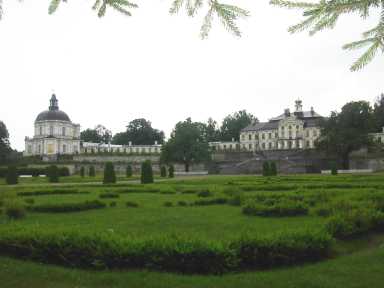

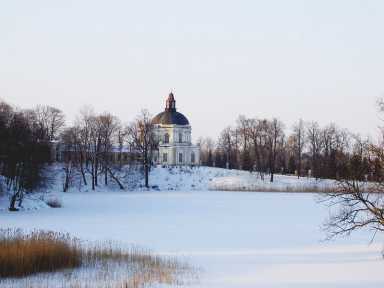
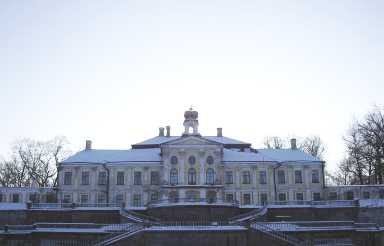
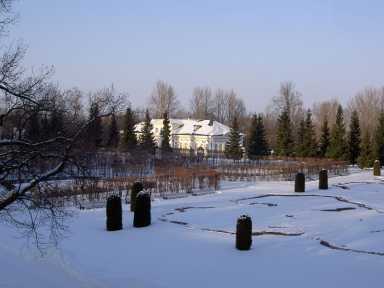
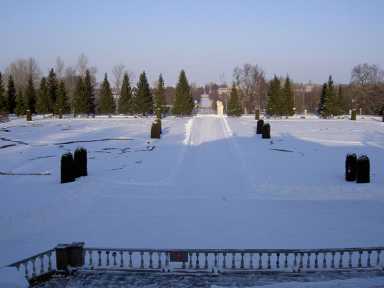
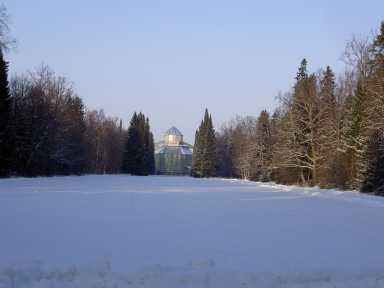
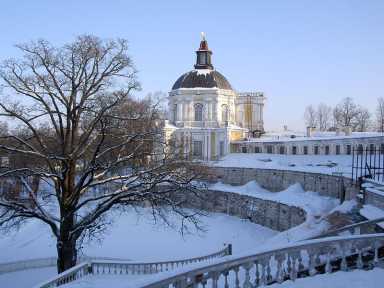
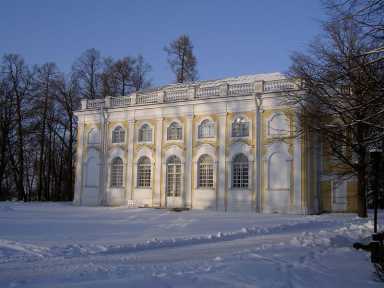

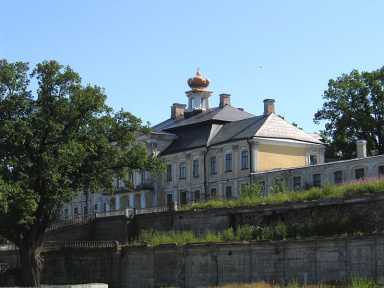
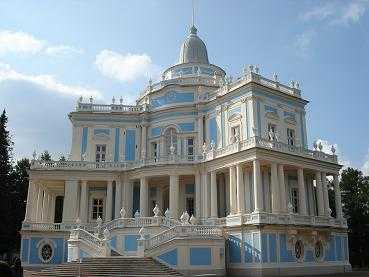
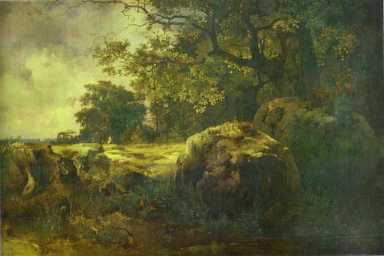


Lomonosov
Excerpted from Wikipedia, the free encyclopedia
Lomonosov (Before 1948: Oranienbaum) is a town
under the jurisdiction of St. Petersburg, Russia,
situated on the southern coast of the Gulf of
Finland, 40 km west of St. Petersburg itself.
Population: 37,776 (2002 Census).
It is the site of an 18th century park and
palace complex, Oranienbaum.
The palace is the only one of the famous
palaces in the vicinity of St. Petersburg
that was not captured by the Germans
during the Second World War.
Name
The original name of the town is Oranienbaum,
which means "orange tree" in German (in modern
German, the word is Orangenbaum).
It was initially applied to the palace complex,
which had greenhouses for exotic plants.
Its present name honours the scientist, poet
and glassblower Mikhail Lomonosov.
In 1754, Lomonosov founded a colored-glass
factory near Oranienbaum,
in the village of Ust-Ruditsa.
Transportation
Lomonosov can be reached by suburban train
from St. Petersburg's Baltic
Terminal to Oranienbaum Station.
Miscellaneous
The city was the birthplace of Igor Stravinsky
(1882-1971), a composer of modern classical music.

For a more information about
Lomonosov see Wikipedia, the free encyclopedia
|